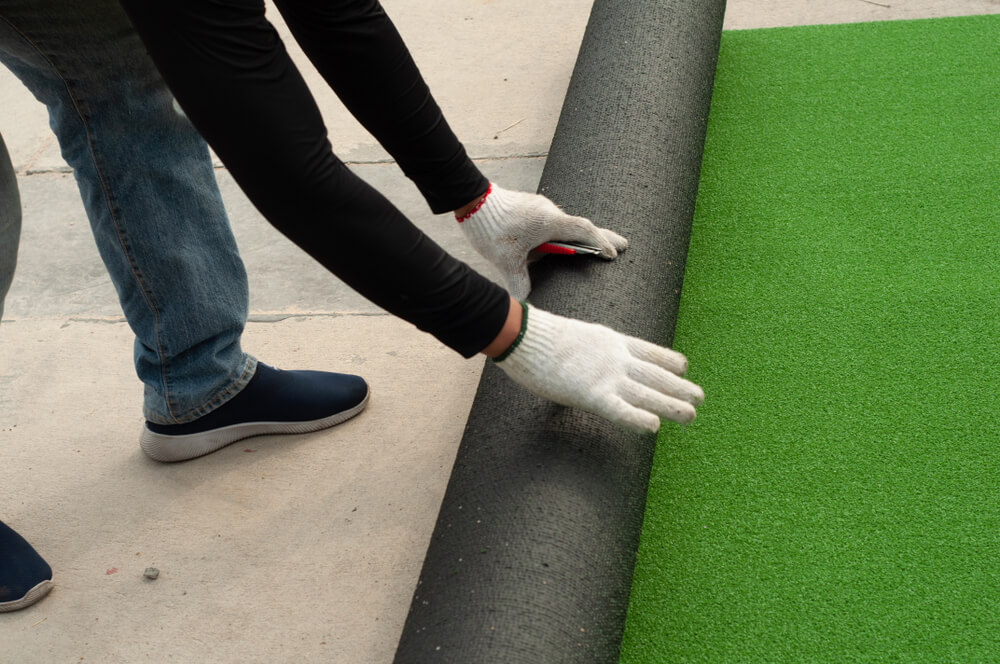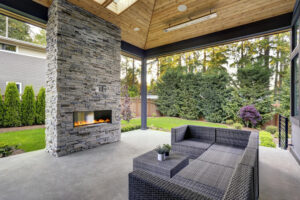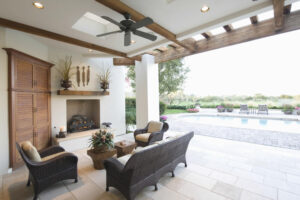Artificial grass on concrete is an attractive look that is appealing to many homeowners and potential homebuyers. As a homeowner, you may decide to learn how to install artificial grass on concrete yourself. Taking on artificial grass installation can be a simple do-it-yourself project. The only way to make the process of installing artificial turf on concrete easier is to call the offices of Cricket Pavers.
You may be wondering, “Where can I find a guide to laying artificial grass on concrete?” You can find one right here, of course! Take a deeper look into the details of how to install artificial grass on concrete with this simple how-to guide for DIY astroturf.
How To Install Artificial Grass Over Concrete: A Simple Guide
You can use this simple guide to installing artificial turf as a step-by-step instruction guide to the process. If you have any trouble, contact Cricket Pavers to speak with a professional about your home improvement project.
- Gather Your Tools. Get a stiff broom, garden hose, sharp blade, a filling, or stripping knife to spread the adhesive, and any other items you may need to prepare the cement, or clean the area. You will also need artificial grass, foam underlay, tape, artificial grass glue, joining tape.
- Grade the Cement. You need to ensure the concrete is suitable for the installation of the artificial grass. Check for cracks, crumbling, unevenness, and other imperfections that could cause damage to the turf. Sweep the concrete, and hose it clean.
- Create Drainage. Once the installation is complete, you also need to check the drainage to make sure there is no area that will create water pooling. You can create drainage holes easily with a 16mm drill, and then fill the holes with a 10mm shingle. This is a good process to prevent puddling that can damage fresh faux grass.
- Level the Top. One of the most vital parts of the installation process of artificial grass is foam underlay. Be sure to smooth the surface of cement after leveling off the top to avoid any uneven areas before laying the underlay.
- Laying the Foam. A high-quality free-drainage foam between 10mm – 20mm is recommended for artificial grass underlay. Place it down and smooth out any cracks, or bumps before laying the astroturf.
- Laying the Artificial Grass. Unroll the artificial turf, lay the piece down, and adjust the area to create even sows that meet tightly at each seam. Cut off any excess with your sharp utility knife, and allow the turf to settle. Starting at the edge at least two, or three hours later, apply the adhesive around the turf beginning at the edges of the seams, and working inward.

Is Astro Artificial Grass Over Concrete Right For Me?
You may not realize how many benefits laying artificial grass on concrete has. Here are just a few of the top reasons to lay artificial grass on concrete:
- It is easy-to-do, and not much harder than laying grass elsewhere.
- Laying artificial grass on concrete can save you money.
- Artificial turf always looks polished.
- It is ideal for those with pets, or children.
- It may be even better than the real thing.
- The installation process is fast.
- It brings your outdoor spaces to life!
There are many benefits of laying artificial grass on concrete, and unsurprisingly, there are so many reasons astroturf may be right for you. Take the first steps towards a beautiful outdoor space, and call the offices of Cricket Pavers today to ask a professional questions about astroturf on concrete. You can lay the grass in any area around your home either on top of an existing slab of concrete, or you can choose a new shape and size. Regardless of the type of beautiful green grass outdoor feature you want to create, a professional can help you avoid making any mistakes while using this guide to installing artificial turf.



